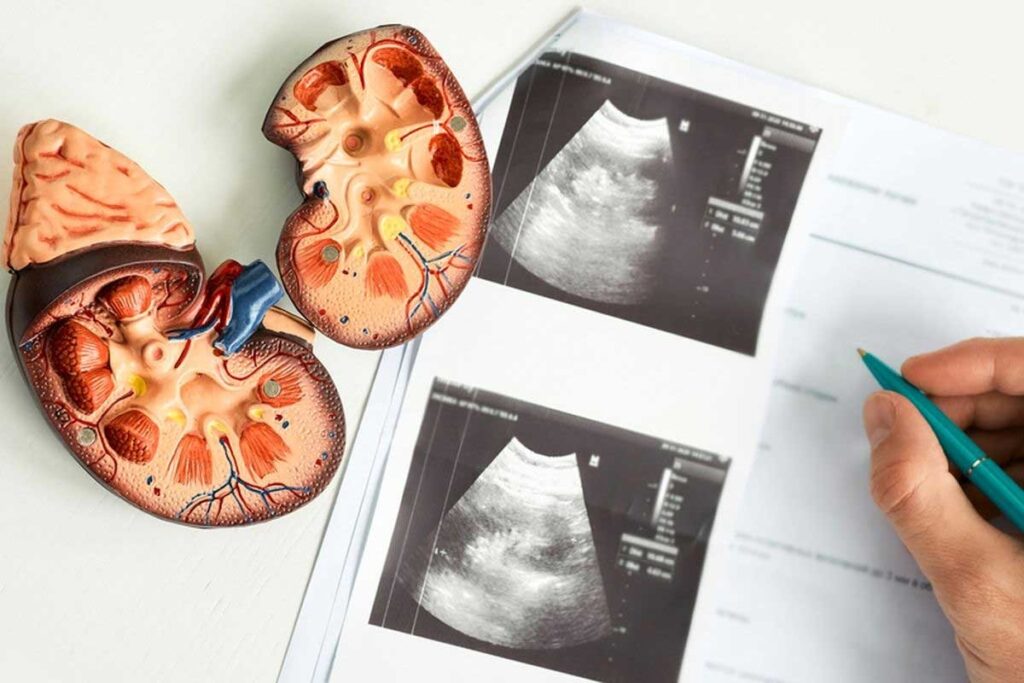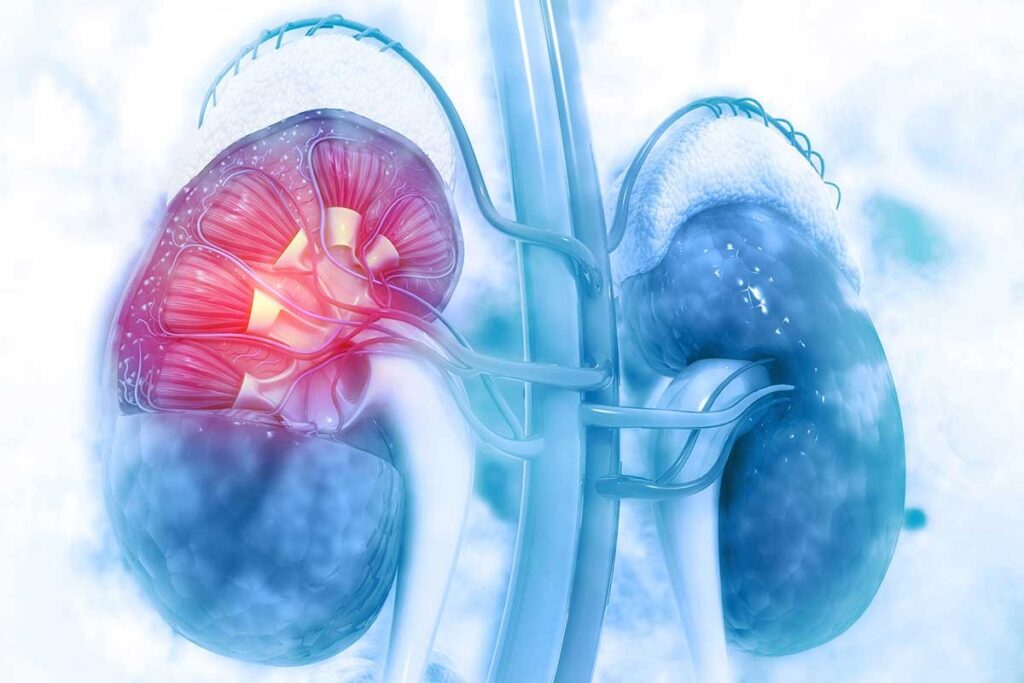At Liv Hospital, we know how key accurate tests are for checking kidney function. A renal kidney scan, or nuclear medicine scan, is a detailed imaging test. It looks at both the shape and how well the kidneys work using a tiny bit of radioactive tracer.

This test gives us special info on blood flow, how it’s filtered, and how it’s removed. It tells us more than usual kidney imaging tests, like ultrasound or CT scans do. A nuclear medicine technologist puts a small amount of radioactive material into your vein. Then, they use a special camera to take pictures of your kidneys.
We’ll help you know what to expect from a Lasix renal scan and its possible side effects. This way, you’ll be well-informed about your kidney health.
A renal kidney scan, also known as renal scintigraphy, checks how well your kidneys work. It uses a tiny bit of radioactive material that the kidneys absorb. This lets us see how your kidneys look and function.
This scan gives us special info on blood flow, filtration, and excretion. It’s a key tool for doctors. Unlike other tests, it shows how well your kidneys are working.

Nuclear medicine scans are different from tests like ultrasound or CT scans. Those tests show the kidney’s shape but not how it works. A renal kidney scan, though, shows how well your kidneys are working.
It uses a radioactive tracer to show how different parts of the kidney work. This helps doctors find problems with kidney function that other scans can’t see.
Doctors might order a renal kidney scan for many reasons. They use it to check kidney function in patients with kidney disease. It also helps find blockages or obstructions in the urinary tract.
They also use it to check the kidneys’ health before surgery or other treatments. Renal kidney scans can spot problems with blood flow, scarring, or damage from infections. They help track how kidney disease gets worse over time. Knowing why you need a renal kidney scan helps you get ready and understand the results.
Learning about the renal kidney scan can make you feel less anxious. We’ll walk you through what happens, from start to finish. This way, you’ll know exactly what to expect.
Preparation is key for a smooth scan. You might need to take off jewelry or other items that could get in the way. Wear comfy clothes and skip the big meals before your scan.
Tell your doctor about any meds you’re on. Some might need to be changed or stopped before the scan. Our team will give you specific advice based on your situation.
The kidney scan procedure usually takes 30 to 60 minutes. Here’s what happens during that time:

Once the nuclear medicine kidney scan is done, you can usually go back to your normal day unless told not to. The tracer will leave your body through your urine.
Drinking lots of water is important to help get rid of the tracer. Your doctor will tell you when to expect the results and who will talk to you about them.
We know tests can be stressful. Our team is here to support you every step of the way.
Nuclear medicine scans give us important insights into how well our kidneys work. They use special radioactive tracers. These scans are key for spotting and treating kidney problems.
Radioactive tracers soak into kidney tissue and send out gamma rays. A scanner picks up these rays to make kidney images. “Hot spots” show where the tracer builds up, and “cold spots” show where it doesn’t.
These tracers help us see how well the kidneys are working. They help find damaged or diseased areas. They also check if treatments are working.
Nuclear medicine scans give us special information on kidney function. They look at blood flow, filtration, and how well the kidneys get rid of waste. By watching how the tracer moves, we can check these important functions.
By looking at these, doctors can really understand kidney health. They can then make better choices for patient care.
Lasix-enhanced renal scans are top-notch for checking kidney function. They mix nuclear medicine with Lasix’s diuretic effects. This combo gives a full view of kidney health.
Lasix is key in telling apart blockages from other kidney issues. Diuretic renography uses a radioactive tracer that kidneys absorb. Then, Lasix is given to boost urine flow.
This method does several things:
A Lasix renal scan is needed to check urinary tract blockages or kidney function. Issues like hydronephrosis or kidney stones might need this test. It shows how bad the blockage is and helps decide treatment.
Lasix makes renal scans better for patient care. It helps doctors make precise diagnoses and treatment plans. This leads to better patient results.
It’s important for patients to know about the side effects of a Lasix renal scan. This test is usually safe but can have some risks and side effects.
Dehydration and more trips to the bathroom are common side effects. This is because Lasix, a diuretic, is used in the scan. It helps check how well the kidneys are working.
To avoid these issues, drinking lots of water before and after the test is key. Also, try to avoid caffeine and alcohol as they can make dehydration worse.
Even though rare, some complications can happen with Lasix renal scans. Allergic reactions to the tracer or Lasix are uncommon but can happen. Signs of an allergic reaction include:
Tell your doctor about any allergies or sensitivities before the scan. If you notice any unusual symptoms during or after the test, get help right away.
Knowing about the possible side effects and taking steps to prevent them can help patients safely get through a Lasix renal scan. This way, they can get important information about their kidney health.
It’s important for patients and doctors to know about the safety of nuclear kidney scans. These scans, also known as renal imaging or nm kidney scans, check how well the kidneys work and their structure.
Nuclear kidney scans use tiny amounts of radioactive tracers to see how the kidneys function. Yes, these scans do expose patients to some radiation. But the amount is set to be as low as possible while getting clear images.
The risk from the radioactive tracer is very small. For people with kidney problems, the benefits of the scan usually outweigh the risks.
The radiation from a typical nuclear kidney scan is similar to other common imaging tests. For example, it’s about the same as a CT scan of the abdomen. While any radiation carries some risk, the chance of harm from a nuclear kidney scan is very low.
Pregnancy is a big no-no for nuclear kidney scans because of the risk to the fetus. If a pregnant woman needs imaging, doctors usually choose non-radiation methods like ultrasound or MRI first.
For kids, doctors carefully weigh the benefits and risks of a nuclear kidney scan. Kids are more sensitive to radiation because of their small size and developing bodies. The dose of the radioactive tracer is adjusted to lower exposure. Often, the scan’s findings are key to managing a child’s health, making it worth the risk.
In summary, nuclear kidney scans do carry some risks, mainly from radiation. But these risks are generally low. By understanding these scans’ safety and taking precautions, doctors can help patients get the needed information while keeping risks down.
Recent studies show that nuclear medicine scans are very accurate for checking kidney function. These scans help doctors find specific kidney problems. The procedure is mostly safe, with very rare complications.
Thanks to new imaging techniques, doctors can now make better treatment plans. These scans show how blood moves, filters, and is removed from the kidneys. This helps spot any problems early on.
Lasix-enhanced renal scans are key in telling apart blockages from other issues. Knowing the good and bad of these scans helps patients trust their treatment more.
In summary, the renal kidney scan is a game-changer in kidney health. It’s both accurate and safe, making it a key part of caring for patients.
A renal kidney scan is a test that uses nuclear medicine. It checks how well the kidneys work and their structure. Doctors use it to find and treat kidney problems.
Lasix is used in renal scans to spot kidney issues. It makes more urine, helping doctors see how the urinary tract works. This helps find blockages.
Side effects include dehydration and more trips to the bathroom. Some people might feel dizzy or lightheaded because of Lasix.
Yes, rare issues like severe dehydration or allergic reactions to Lasix can happen. If symptoms are bad or last a long time, get medical help.
The scan uses controlled amounts of radiation. The tracer’s short half-life means it’s quickly removed from the body. This lowers the risk of harm from radiation.
Nuclear scans are mostly safe, but pregnant women and kids need extra care. Doctors weigh the risks and benefits. They might choose other tests if possible.
To prepare, arrive with a full bladder and avoid certain meds. Tell your healthcare team about any health issues or allergies. They’ll give you specific instructions.
After the scan, you can go back to normal activities. A radiologist will look at the images. Then, your doctor will talk to you about the results and what to do next.
These scans use tracers to check blood flow and how the kidneys filter and remove waste. This info helps doctors understand kidney function and treat problems.
Diuretic renography uses Lasix to check for urinary tract blockages. It measures how the kidneys respond to the diuretic. This helps doctors find and fix issues.
Subscribe to our e-newsletter to stay informed about the latest innovations in the world of health and exclusive offers!
WhatsApp us